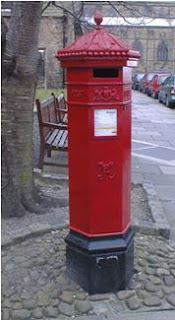What’s your point!?
In a combined GCSE English Language and Literature package which boasts a plethora of ultra-ambitious aims and objectives devoted to the complex task of textual analysis, where do you begin when trying to plot your course? Trying to resolve that particular dilemma is not made any easier by the fact that your options are unreassuringly many and varied.
You might, for example, set sail straight into deep water with a socio-political reading of Shakespeare or Dickens, although do be wary of being left stranded in the doldrums. Or, if you prefer to tack a little more cautiously into the wind, you might embark upon your voyage with a character study based on a much more accessible piece of modern prose.
But with so many directions to choose from, how do you chart a passage that will be both meaningful and memorable for your students? Well, one approach you might consider is to circumnavigate with the assistance of those trusty guiding principles,
Point,
Evidence and
Explanation.
When addressing objectives which require the student to demonstrate an understanding of the numerous aspects of the writer’s craft, why not approach them all under the one umbrella of
PEE? So, for example, when trying to enhance your students’ appreciation of figures of speech, why not structure the lesson by utilising PEE in the very meaningful context of a typical examination question?
Consider, for instance, a lesson intended to explore the crucial objective of how and why writers use imagery. If exploring Ted Hughes’ poem
Wind from the AQA anthology Moon on the Tides, your strategy might be as follows:
TYPICAL EXAMINATION QUESTION:
How does the writer use language to create effects?
POINT 1:
One way in which Hughes uses language to create effects for the reader is through his use of imagery. The opening line consists of the following metaphor:
EVIDENCE:
“This house has been far out at sea all night ...”
EXPLANATION:
The comparison, which implicitly compares the wind-swept house to a boat, affects the reader in a number of ways. The house has not literally been ‘out at sea’. The metaphor is a powerful expression of what the extreme weather must have felt and sounded like to Hughes from inside the building as the wind raged just beyond. The ship comparison is effective because it encourages the reader to consider the vulnerability of a boat on a rough sea and then to view the house in the same way. It certainly conveys an impression of Hughes’ concern over the ferocity of the storm. The metaphor also has the connotation that the wind has uprooted the house and actually blown it into the sea, again emphasising the strength of the storm. The phrase ‘far out’ further reinforces this idea. Perhaps Hughes has been influenced by the famous scene in the film ‘The Wizard of Oz’ in which Dorothy’s house is literally swept up by a cyclone.
The next POINT could then be introduced and left for students to develop by themselves:
POINT 2:
A second example of the way in which Hughes uses imagery for effect occurs when ...
Admittedly, students might need a few helpful bullet points at this juncture in order to steer them safely into port.
You could then go on to repeat this rigorously systematic PEE approach when introducing the many other features of literary criticism required by the GCSE English Language / English Literature syllabuses. Of course, the above lesson outline does assume that your students already know what a metaphor is!
The value of such a uniform approach to the potentially choppy waters of textual analysis is that you are not only making difficult concepts more memorable by approaching them in the increasingly safe and familiar context of PEE, but you are also regularly reinforcing this essential grade A* - C mode of inquiry. In addition, you are also encouraging first-rate examination technique. After all, why only teach such a valuable analytical tool a handful of times when you can actually employ it as a vehicle for conveying so many other important ideas? Furthermore, why leave examination practice to the final term when you can make it an integral part of your day to day teaching?
Of course, you might justifiably be concerned about it all becoming a little too ‘samey’. Well, don’t worry. Fortunately for you, the heavily over-loaded English Language / English Literature curriculum will provide you with plenty of other aims and objectives which require an entirely different approach - spelling, punctuation and grammar not being the least of your problems.
So the next time some disaffected kid tries to stir up a mutiny in your classroom by belligerently bellowing, ‘WHAT’S YOUR POINT!?’, calmly direct his or her gaze towards the exquisitely stream-lined plan on the white board. Teach PEE often enough, then that particular question should answer itself... and, with a bit of luck, the rest will all be plain sailing!
Peter Morrisson
English Teacher and author








